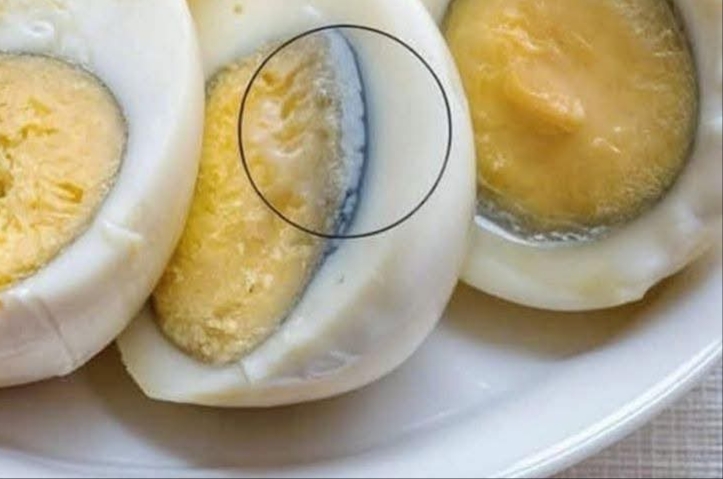Here’s a full recipe and guide titled “Perfect Hard-Boiled Eggs (and What That Green Ring Really Means)”—complete with all requested sections and the wide line removed:
Perfect Hard-Boiled Eggs (and What That Green Ring Really Means)
Introduction
Eggs are one of the most versatile and nutritious staples in any kitchen. Whether scrambled for breakfast, poached for brunch, or boiled for a quick snack, eggs deliver high-quality protein, essential vitamins, and minerals—all with zero added sugar or carbs.
Among all the ways to prepare them, hard-boiled eggs are a standout. They’re quick, portable, and easy to slice into salads, tuck into sandwiches, or enjoy solo with a sprinkle of salt. Yet, sometimes a greenish-gray ring appears around the yolk—raising questions for even seasoned cooks.
Origin and Cultural Significance
Boiling eggs is an ancient cooking method practiced globally—from Asia to Europe to the Americas. In many cultures, hard-boiled eggs symbolize life and rebirth, making appearances during religious holidays like Easter (Christianity), Passover (Judaism), and Nowruz (Persian New Year).
In modern cuisine, hard-boiled eggs are prized for their adaptability. They’re popular in deviled eggs, egg salads, ramen bowls, picnic baskets, and protein-packed lunchboxes.
Ingredients Quantity
- 6 large eggs
- Water (enough to cover the eggs by 1 inch)
- Ice (for ice bath)
Optional Additions
- 1 tsp vinegar (to help prevent cracking)
- ½ tsp salt (to make peeling easier)
- Fresh herbs or pepper for serving
- A dash of paprika or everything bagel seasoning
Tips for Success
- Use older eggs (7–10 days old) for easier peeling.
- Avoid overcooking—it causes the green ring and rubbery whites.
- Shock in ice water immediately after boiling to halt cooking.
- Peel under running water or in a bowl of water for smooth results.
Instructions
- Place eggs in a single layer in a saucepan.
- Add water to cover the eggs by about 1 inch.
- Bring to a boil over medium-high heat. Once the water reaches a full boil, turn off the heat.
- Cover the pot and let the eggs sit for:
- 9–10 minutes for fully hard-boiled yolks
- 7–8 minutes for slightly softer centers
- Transfer eggs immediately to an ice bath and let sit for at least 5 minutes.
- Gently tap and peel once cooled.
Description
These perfect hard-boiled eggs come out with tender whites and bright, creamy yolks every time—no green ring in sight if cooked properly. They’re delicious plain or with seasoning and add protein power to any meal or snack.
Nutritional Information (Per 1 large hard-boiled egg)
- Calories: 77
- Protein: 6g
- Fat: 5g
- Saturated Fat: 1.6g
- Carbohydrates: 0.6g
- Sugar: 0g
- Cholesterol: 187mg
- Sodium: 62mg
Conclusion
Hard-boiled eggs are a go-to for good reason: they’re simple, nutritious, and versatile. Understanding the science behind that green ring helps perfect your technique and appreciate just how foolproof this snack can be.
Recommendation
Make a batch of hard-boiled eggs every week to keep on hand for breakfasts, salads, and snacks. Store unpeeled in the fridge for up to 7 days. Try seasoning them differently each time for variety!
Embracing Healthful Indulgence
Eggs are proof that nutritious eating doesn’t have to be complicated. Rich in protein, vitamins, and healthy fats, they’re a natural superfood that satisfies hunger and fuels your body—no guilt required. Pair with avocado toast, sprinkle with seeds, or enjoy with fresh fruit for a wholesome, indulgent bite.
Would you like a variation such as jammy eggs or a recipe that uses these hard-boiled eggs, like egg salad or deviled eggs?

